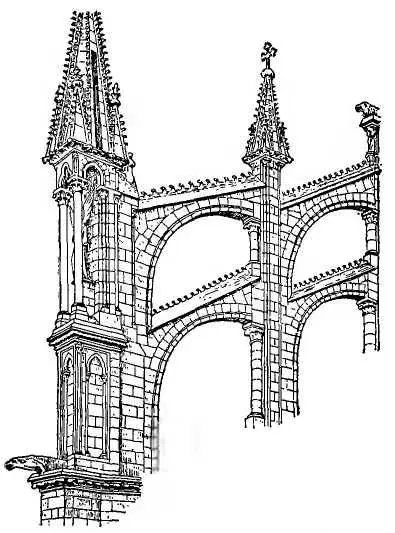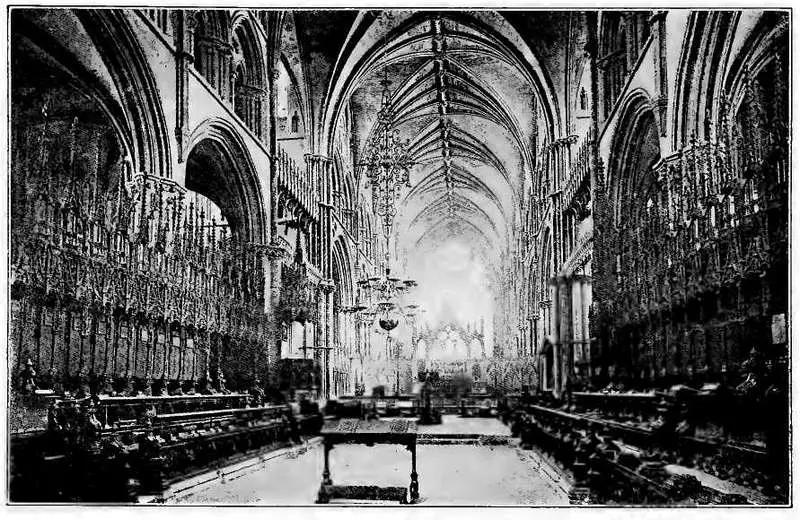James Walsh - The Thirteenth, Greatest of Centuries
Здесь есть возможность читать онлайн «James Walsh - The Thirteenth, Greatest of Centuries» — ознакомительный отрывок электронной книги совершенно бесплатно, а после прочтения отрывка купить полную версию. В некоторых случаях можно слушать аудио, скачать через торрент в формате fb2 и присутствует краткое содержание. Жанр: foreign_prose, История, foreign_edu, foreign_antique, на английском языке. Описание произведения, (предисловие) а так же отзывы посетителей доступны на портале библиотеки ЛибКат.
- Название:The Thirteenth, Greatest of Centuries
- Автор:
- Жанр:
- Год:неизвестен
- ISBN:нет данных
- Рейтинг книги:3 / 5. Голосов: 1
-
Избранное:Добавить в избранное
- Отзывы:
-
Ваша оценка:
- 60
- 1
- 2
- 3
- 4
- 5
The Thirteenth, Greatest of Centuries: краткое содержание, описание и аннотация
Предлагаем к чтению аннотацию, описание, краткое содержание или предисловие (зависит от того, что написал сам автор книги «The Thirteenth, Greatest of Centuries»). Если вы не нашли необходимую информацию о книге — напишите в комментариях, мы постараемся отыскать её.
The Thirteenth, Greatest of Centuries — читать онлайн ознакомительный отрывок
Ниже представлен текст книги, разбитый по страницам. Система сохранения места последней прочитанной страницы, позволяет с удобством читать онлайн бесплатно книгу «The Thirteenth, Greatest of Centuries», без необходимости каждый раз заново искать на чём Вы остановились. Поставьте закладку, и сможете в любой момент перейти на страницу, на которой закончили чтение.
Интервал:
Закладка:
Almost needless to say it has been impossible, in a brief sketch of this kind limited to a single chapter, to give anything like an adequate idea of what the enthusiastic graduate students and professors of the Thirteenth Century succeeded in accomplishing. It is probably this department of University life, however, that has been least understood, or rather we should say most persistently misunderstood. The education of the time is usually supposed to be eminently unpractical, and great advances in the departments of knowledge that had important bearings on human life and its relations were not therefore thought possible. It is just here, however, that sympathetic interpretation and the pointing out of the coordination of intellectual work often considered to be quite distinct from university influences were needed. It is hoped then that this short sketch will prove sufficient to call the attention of modern educators to a field that has been neglected, or at least has received very little cultivation compared to its importance, but which must be sedulously worked, if our generation is to understand with any degree of thoroughness the spirit manifested and the results attained by the medieval universities.

DOUBLE FLYING BUTTRESS (RHEIMS)
VI
THE BOOK OF THE ARTS AND POPULAR EDUCATION
The most important portion of the history of the Thirteenth Century and beyond all doubt the most significant chapter in the book of its arts, is to be found in the great Gothic Cathedrals, so many of which were erected at this time and whose greatest perfection of finish in design and in detail came just at the beginning of this wonderful period. We are not concerned here with the gradual development of Gothic out of the older Romanesque architectural forms, nor with the Oriental elements that may have helped this great evolution. All that especially concerns us is the fact that the generations of the Thirteenth Century took the Gothic ideas in architecture and applied them so marvelously, that thereafter it could be felt that no problem of structural work had been left unsolved and no feature of ornament or decoration left untried or at least unsuggested. The great center of Gothic influence was the North of France, but it spread from here to every country in Europe, and owing to the intimate relations existing between England and France because of the presence of the Normans in both countries, developed almost as rapidly and with as much beauty, and effectiveness as in the mother country.
It is in fact in England just before the Thirteenth Century, that the spirit which gave rise to the Cathedrals can be best observed at work and its purposes most thoroughly appreciated. The great Cathedral at Lincoln had some of its most important features before the beginning of the Thirteenth Century and this was doubtless due to the famous St. Hugh of Lincoln, who was a Frenchman by birth and whose experience in Normandy in early life enabled him successfully to set about the creation of a Gothic Cathedral in the country that had become his by adoption.

ANGEL CHOIR (LINCOLN)
Hugh himself was so great of soul, so deeply interested in his people and their welfare, so ready to make every sacrifice for them even to the extent of incurring the enmity of his King (even Froude usually so unsympathetic to medieval men and things has included him among his Short Studies of Great Subjects), that one cannot help but think that when he devoted himself to the erection of the magnificent Cathedral, he realized very well that it would become a center of influence, not only religious but eminently educational, in its effects upon the people of his diocese. The work was begun then with a consciousness of the results to be attained and the influence of the Cathedral must not be looked upon as accidental. He must have appreciated that the creating of a work of beauty in which the people themselves shared, which they looked on as their own property, to which they came nearly every second day during the year for religious services, would be a telling book out of which they would receive more education than could come to them in any other way.
Of course we cannot hope in a short chapter or two to convey any adequate impression of the work that was done in and for the Cathedrals, nor the even more important reactionary influence they had in educating the people. Ferguson says: 9 9 Ferguson—History of Architecture. N. Y., Dodd, Mead & Co.
"The subject of the cathedrals, their architecture and decoration is, in fact, practicably inexhaustible. . . . Priests and laymen worked with masons, painters, and sculptors, and all were bent on producing the best possible building, and improving every part and every detail, till the amount of thought and contrivance accumulated in any single structure is almost incomprehensible. If any one man were to devote a lifetime to the study of one of our great cathedrals—assuming it to be complete in all its medieval arrangements—it is questionable whether he would master all its details, and fathom all the reasonings and experiments which led to the glorious result before him. And when we consider that not in the great cities alone, but in every convent and in every parish, thoughtful professional men were trying to excel what had been done and was doing, by their predecessors and their fellows, we shall understand what an amount of thought is built into the walls of our churches, castles, colleges, and dwelling houses. If any one thinks he can master and reproduce all this, he can hardly fail to be mistaken. My own impression is that not one tenth part of it has been reproduced in all the works written on the subject up to this day, and much of it is probably lost and never again to be recovered for the instruction and delight of future ages."
This profound significance and charming quality of the cathedrals is usually unrecognized by those who see them only once or twice, and who, though they are very much interested in them for the moment, have no idea of the wealth of artistic suggestion and of thoughtful design so solicitously yet happily put into them by their builders. People who have seen them many times, however, who have lived in close touch with them, who have been away from them for a time and have come back to them, find the wondrous charm that is in these buildings. Architects and workmen put their very souls into them and they will always be of interest. It is for this reason, that the casual visitor at all times and in all moods finds them ever a source of constantly renewed pleasure, no matter how many times they may be seen.
Elizabeth Robbins Pennell has expressed this power of Cathedrals to please at all times, even after they have been often seen and are very well known, in a recent number of the Century , in describing the great Cathedral of Notre Dame, "Often as I have seen Notre Dame," she says, "the marvel of it never grows less. I go to Paris with no thought of time for it, busy about many other things and then on my way over one of the bridges across the river perhaps, I see it again on its island, the beautiful towers high above the houses and palaces and the view now so familiar strikes me afresh with all the wonder of my first impression."
This is we think the experience of everyone who has the opportunity to see much of Notre Dame. The present writer during the course of his medical studies spent many months in daily view of the Cathedral and did a good deal of work at the old Morgue, situated behind the Cathedral. Even at the end of his stay he was constantly finding new beauties in the grand old structure and learning to appreciate it more and more as the changing seasons of a Paris fall and winter and spring, threw varying lights and shadows over it. It was like a work of nature, never growing old, but constantly displaying some new phase of beauty to the passers-by. Mrs. Pennell resents only the restorations that have been made. Generations down even to our time have considered that they could rebuild as beautifully as the Thirteenth Century constructors; some of them even have thought that they could do better, doubtless, yet their work has in the opinion of good critics served only to spoil or at least to detract from the finer beauty of the original plan. No wonder that R. M. Stevenson, who knew and loved the old Cathedral so well, said: "Notre Dame is the only un-Greek thing that unites majesty, elegance, and awfulness." Inasmuch as it does so it is a typical product of this wonderful Thirteenth Century, the only serious rival the Greeks have ever had. But of course it does not stand alone. There are other Cathedrals built at the same time at least as handsome and as full of suggestions. Indeed in the opinion of many critics it is inferior in certain respects to some three or four of the greatest Gothic Cathedrals.
Читать дальшеИнтервал:
Закладка:
Похожие книги на «The Thirteenth, Greatest of Centuries»
Представляем Вашему вниманию похожие книги на «The Thirteenth, Greatest of Centuries» списком для выбора. Мы отобрали схожую по названию и смыслу литературу в надежде предоставить читателям больше вариантов отыскать новые, интересные, ещё непрочитанные произведения.
Обсуждение, отзывы о книге «The Thirteenth, Greatest of Centuries» и просто собственные мнения читателей. Оставьте ваши комментарии, напишите, что Вы думаете о произведении, его смысле или главных героях. Укажите что конкретно понравилось, а что нет, и почему Вы так считаете.












